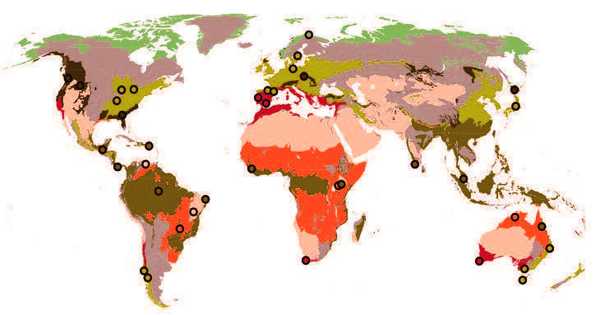The multinational CLOUD team of atmospheric researchers has uncovered a mechanism that permits ice cloud nuclei to develop and grow rapidly in the upper troposphere. Cloud chamber tests were used to make the discovery, and a team from Goethe University gave highly specialized observations.
Despite the fact that the parameters for nucleus formation are only met in the Asian monsoon zone, the mechanism is likely to influence ice cloud production across most of the Northern Hemisphere.
The Asian monsoon moves massive amounts of air from near-surface atmospheric strata to a height of roughly 15 kilometers. Human-caused pollution ends up in the upper troposphere in the same way that they do in a massive elevator.
In their experimental chamber at the CERN particle accelerator center in Geneva, a research team from the CLOUD consortium (Cosmics Leaving Outdoor Droplets), which included atmospheric researchers from Goethe University in Frankfurt, recreated the conditions that existed there, including cosmic radiation.
They discovered that when ammonia, nitric acid, and sulphuric acid are present, up to 100 times more aerosol particles form than when only two of these components are present. These particles can then be used as condensation nuclei for liquid water droplets in clouds, as well as solid seeds for pure ice clouds, often known as cirrus clouds.
The scientists also discovered that ice clouds containing three-component particles occur at lower water vapor supersaturation than expected. This indicates that ice clouds are forming under conditions that atmospheric scientists throughout the world had previously concluded did not contribute to the creation of cirrus clouds.
Apart from the very best measuring equipment, such measurements require highly specialized expertise. That is why you need teams with complementary skills to conduct such an experiment.
Professor Joachim Curtius
The CLOUD research team was also able to show that cloud nuclei can spread throughout huge sections of the Northern Hemisphere in just a few days using model estimates from around the world.
“The experiment in the cloud chamber was a reaction to the results of field experiments over Asia. These measurements showed that ammonia is present there in the upper troposphere during the monsoon,” explains Professor Joachim Curtius from Goethe University.
“Previously, we had always assumed that ammonia, due to its water solubility, was rinsed out of the rising air masses before it reached the upper troposphere.”
Ammonia is a necessary element for increased cloud production, as the CLOUD researchers’ experiment now confirms. Agriculture is the primary source of ammonia emissions in Asia.
Teams from 21 research institutions make up the international CLOUD research partnership (Cosmics Leaving Outdoor Droplets).
The researchers led by Curtius were in charge of mass spectrometric measurements of sulphuric acid content in the experiment, the findings of which are currently being published in the current edition of “Nature.”
This concentration fluctuated during the experiment, but it was usually very low, similar to the upper troposphere, where a single molecule of sulphuric acid is surrounded by over a trillion other gas molecules.
“Apart from the very best measuring equipment, such measurements require highly specialized expertise. That is why you need teams with complementary skills to conduct such an experiment,” explains Curtius, who is a member of the CLOUD steering committee and was the coordinator of the EU project CLOUD-MOTION successfully completed just recently.
Sulphuric acid is formed in the CLOUD chamber from sulphur dioxide and hydroxyl radicals, much as it is in the environment. Clouds are an important but yet poorly understood component of the global climate system.
It gets warmer or colder beneath them depending on whether they float high up or deep down, how much water or ice they contain, how thick they are, and where they form on the globe.
Researchers all across the world need precise information of all the processes surrounding clouds as a climate element in order to improve the precision of climate models. The discoveries of the CLOUD research team are assisting them in making increasingly accurate climate predictions.
















